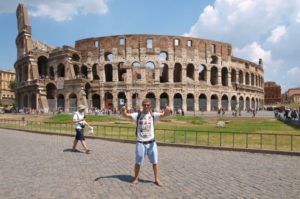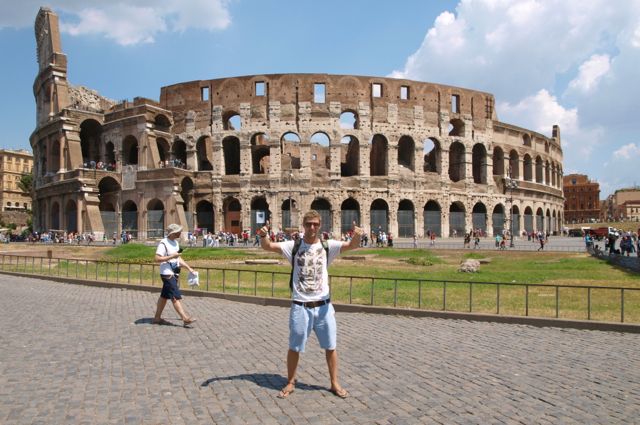Visitors to Rome often find themselves overpowered and confused by the sheer range of historical buildings clustered within the city centre. Such has been the importance of Rome to world history, it is hardly possible to walk a hundred metres without bumping into an attraction which, in another place, would dominate the attention of every tourist for miles around. There is little doubt, however, that to find the most significant collection of archaeological artefacts in all of Rome a visit to the Forum and its surroundings is essential.

The Roman Forum, also known as the ‘Forum Magnum’ is situated within a small valley which lies between the Palatine and Capitoline hills. Originally a marsh, it was drained very early in the city’s history, and became one of the most important areas for civic occasions of all kinds. These included triumphal processions, criminal trials, public speeches and religious ceremonies, as well as commercial activity. Now the Forum is home to a wide variety of ruins in differing states of repair, and can be accessed by purchasing a ticket which also provides admission to the nearby Colosseum. Open from 8.30 am until one hour before sunset on most days of the year, the Forum offers discounts to EU citizens between the ages of 18 and 24, and is entirely free to EU citizens under the age of 18 or over the age of 65. However, visitors should be warned that the signage on site is often less than helpful. Ensure that you bring a guidebook, or invest in one of the more reputable guided or audio tours which are readily available.
Of course, some of the features of the Forum are instantly recognisable. The Arch of Titus, built in 82 AD in order to commemorate the conquest of Jerusalem, for example, is hard to miss. The same goes for the half-completed Basilica of Maxentius, also known as the Basilica of Constantine, which boasts impressive carvings of the expansion of the Roman Empire on its exterior. The Column of Phocas, built in 608 AD by a Byzantine Emperor, is the last ‘imperial’ addition to the Forum, and is also an impressive sight. Some other parts of the Forum cannot be approached by tourists, but can still be viewed, such as the Temple of Venus and Rome (built by the Emperor Hardrian in 135 AD). Those with a taste for an enigma will certainly also want to visit the Lacus Curtius, which is marked by the remains of an altar, and played some part in the early rituals of Rome which is now largely shrouded in mystery. Historians have various theories about its origins, but it seems to have been connected with the Underworld in popular Roman myth. Those with a taste for more modern Roman history may wish to visit some of the many churches dotted around the forum, from the ancient Santa Maria Antiqua to the 16th century San Giuseppe dei Falegnami.
Of course, having taken all of this in, keen tourists will also want to take advantage of the exit gate nearest to the Colosseum, in order to visit the world’s largest amphitheatre. With a capacity of well over 50,000 people at the date of its construction in 80 AD, anyone who has ever seen films such as ‘Gladiator’ will certainly appreciate the power and majesty of this ancient feat of Roman engineering. After such an epic day of sightseeing, however, it is unlikely that most visitors will want to walk through the city centre or struggle with the sometimes unreliable Rome Metro system. Don’t worry as car hire in Rome is easy and readily available. Indeed, driving in Rome, with its challenges and sometimes hectic pace, can even be seen as part of the tourist experience! After all, when in Rome, one should do as the Romans do – and that includes enjoying a good car.




